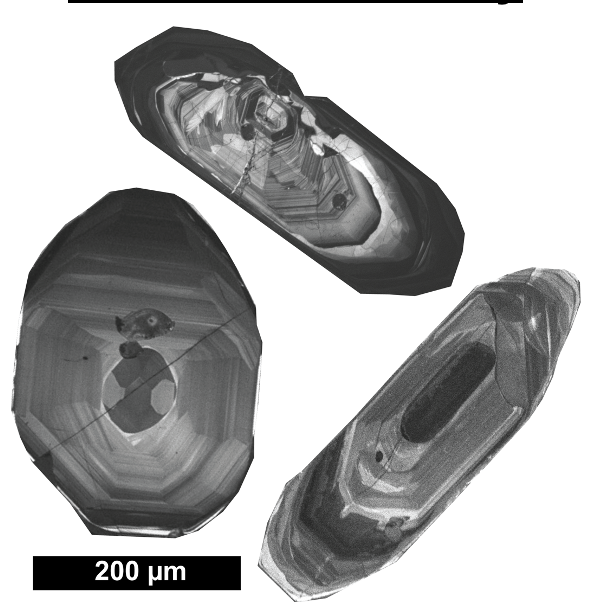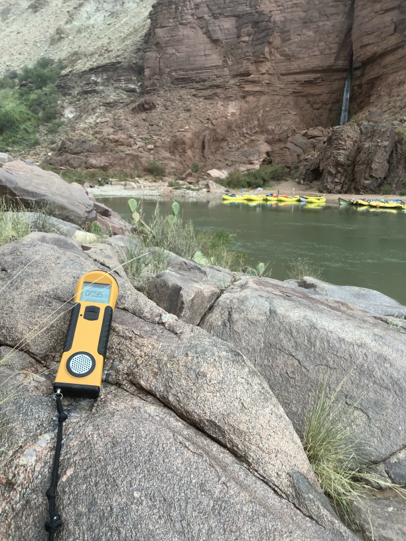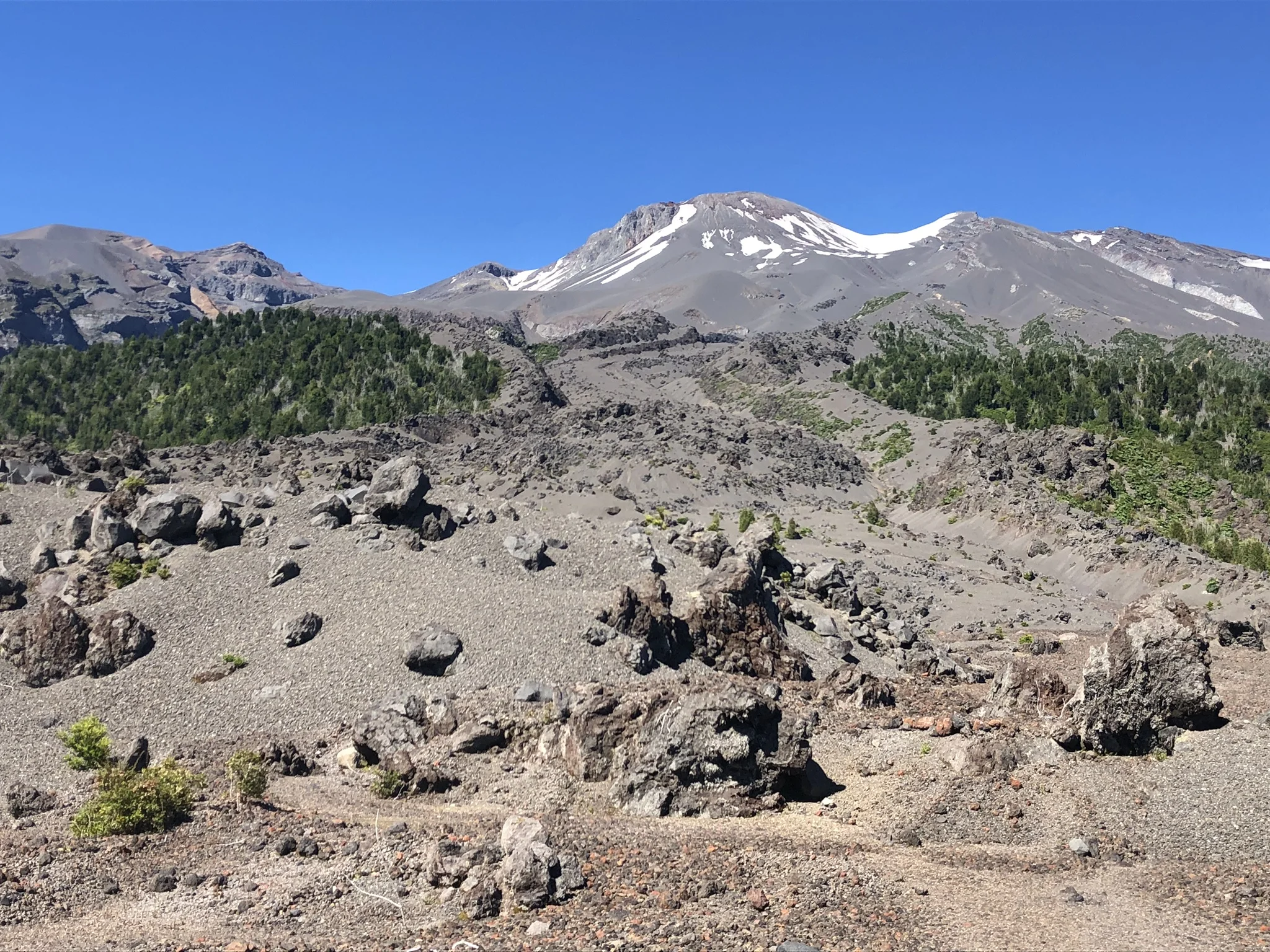Research Interests
I joined SLEUTh Lab after completing my PhD with the UW-Madison Earth Evolution Group (2020-2024). During my PhD I used a combination of radiogenic (U-Pb, Lu-Hf) and stable (O) isotopes in zircon alongside trace element systematics to investigate the growth and destruction of continental crust using SIMS and LA-ICP-MS methods. I also worked in the WiscAr Lab (2018-2020), where I developed a work-flow for the Isotopx NGX noble gas mass spectrometer and used 40Ar/39Ar geochronology to characterize recent volcanic activity in the Andean Southern Volcanic Zone.
As a member of the SLEUTh Lab team, I aim to first and foremost collaborate with group members and those in the broader scientific community to advance U-Th techniques as applied to questions about climate evolution and sea-level change. I have personal interests in examining linkages between sedimentary and magmatic records of climate events, and in developing novel geochemical tracers of sediment and fluids through the subduction system.
Sea Level + Environmental reconstruction using Uranium-Thorium (SLEUTh LAB)
Projects Coming soon!
The University of Wisconsin-Madison
The SLEUTh Lab is a team of geoscientists led by Dr. Andrea Dutton who are committed to studying Earth history as a means to better understand the dynamics of our planet and how they will shape our future. Most of our research projects focus on past climate and sea level change, but more broadly address topics within carbonate and isotope geochemistry, sedimentary systems and diagenesis, weathering and ocean chemistry, including intersections with paleobiology, geophysics, and much more.
UW-Madison Earth Evolution Group (2020-2024)
Comparing Detrital and Igneous zircon records of early crustal evolution
(Beartooth Detrital Zircons)
The University of Wisconsin-Madison
Advisor: Annie Bauer
Collaborators: John Valley, Tyler Blum, Jonathan O’Neil, Hanika Rizo, European Research Council MEET Project
Although divorced from their parental rocks, detrital zircons are robust archives of primary magmatic and temporal information and record valuable chemical information about the earliest continents. However, questions remain regarding: (1) whether detrital grains adequately represent geologic processes through space and time and (2) if grains record processes from the full crustal thickness. During my time with the UW-Madison Earth Evolution Group I tackled these challenges by correlating in situ geochemical analyses within carefully-vetted grain domains and by applying my findings from suites of cogenetic igneous zircon as a geochemical framework to understanding Archean detrital data.
Zircon Lu-Hf Isotope systematics: A Lens on Volcanic-Plutonic Connections (Grand Canyon)
The University of Wisconsin-Madison
Advisor: Annie Bauer
Collaborators: Vishnu Basement Field Forum III Participants
Studies combining records of geochemical variation with observations of pluton structure and deformation are necessary to disentangle mechanisms and timescales influencing granitoid emplacement. I am working with a group of interdisciplinary geologists to disentangle these processes at the grain, sample, and crustal block scale for several plutons located in the Upper Granite Gorge of Grand Canyon.
Archean Crustal Reworking: Insights from In Situ Zircon O Isotopes + Trace Elements
(Acasta Gneiss Complex + Saglek-Hebron Complex)
The University of Wisconsin-Madison
Mixon, E.E., Bauer, A.M., Blum, T.B., Valley, J.W., Rizo, H., O’Neil, J., Kitajima, K. (2024). Zircon Geochemistry from Early Evolved Terranes Records Coeval Stagnant- and Mobile-lid Tectonic Regimes. Proceedings of the National Academy of Sciences. https://www.pnas.org/doi/10.1073/pnas.2405378121
Press release about Mixon et. al (2024)
CAMECA Newsleetter about Mixon et al. (2024)
Mixon, E.E, Bauer, A.M., O’Neil, J., Rizo, H. Blum, T.B., Valley, J. (2023). Mechanisms for generating elevated zircon δ18O in Archean crust: Insights from the Saglek-Hebron Complex, Canada. Earth and Planetary Science Letters. https://doi.org/10.1016/j.epsl.2023.118443
Plate tectonics drives the cycle of crust generation and destruction via volcanism, erosion modulated by uplift and climate, and recycling at subduction zones. While it has been posited that this cycle is intimately tied to the habitability of Earth, the continual recycling of crust (e.g. via impacts and eventually subduction zone processes) through Earth’s 4.5 billion year (Ga) history makes it challenging to investigate the nature of the earliest continents. Only about ~3% of Earth’s present surface is covered by rocks > 2.5. Of these, an even smaller fraction represents rocks as old as 4.0 Ga. As a member of the UW-Madison Earth Evolution Group and in collaboration with the WiscSIMS Lab and the European Research Council MEET Project, I used a combination of in situ radiogenic (Lu-Hf, U-Pb) and stable (O) isotopes, trace elements (TEs), and petrologic observations to investigate and compare the processes responsible for forming the intact remnants of Earth’s earliest continents.
WiscAr Lab (2018-2020)
Southern Andes Volcano Geochronology, Geochemistry, and Petrology
The University of Wisconsin-Madison
Mixon, E.E., Singer, B.S., Jicha, B.R., Ramirez, A., (2021) Calbuco, a monotonous andesitic high-flux volcano in the Southern Andes, Chile, Journal of Volcanology and Geothermal Research, Volume 416, https://doi.org/10.1016/j.jvolgeores.2021.107279.
Klug, J.D., Ramirez, A., Singer, B.S., Jicha, B.R., Mixon, E.E., Martinez, P. (2022) Intercalibration of the Servicio Nacional de Geologia y Mineria (SERNAGEOMIN), Chile and WiscAr 40Ar/39Ar laboratories for Quaternary dating. https://doi.org/10.1016/j.quageo.2022.101354
As a member of the WiscAr Lab (2018-2020) I worked to generate precise geochronologic data to constrain igneous processes with a specific focus on reconstructing the eruptive history of Calbuco Volcano (41.3°S, Chile). Using a combination of 40Ar/39Ar geochronology, geochemistry, petrologic observations, and field characterization, I developed a Pleistocene-Holocene eruptive history of this active frontal arc volcano and investigated hypotheses relating periods of episodically high growth rates to crustal stress changes governed by local to regional scale glaciation. This work has implications for understanding the spectrum of regional and local hazards Calbuco poses, and also allows for hypotheses regarding magmatism-cryosphere coupling.
Isotopx NGX-600 Noble Gas Mass Spectrometer Method Development
The University of Wisconsin-Madison
Mixon, E.E., Jicha, B.R., Tootell, D., Singer, B.S. (2022). Optimizing 40Ar/ 39Ar analyses using an Isotopx NGX-600 mass spectrometer, Chemical Geology https://doi.org/10.1016/j.chemgeo.2022.120753
From 2019-2021, I worked alongside research scientists and instrument specialists to develop 40Ar/39Ar measurement routines for the WiscAr Lab’s Isotopx NGX-600 (installed 2019). Through this effort, we generated a three-prong approach to implementing best analytical practices for a new noble gas instrument, including: (1) identification of optimal measurement and integration times for blanks, baselines, and air aliquots of various ion intensities, (2) quantification of the NGX-600 sensitivity via measurements of first principle 40Ar/39Ar standards, and (3) development of corrections associated with inter-Faraday biases, instrumental mass bias, and Faraday-multiplier gain.







